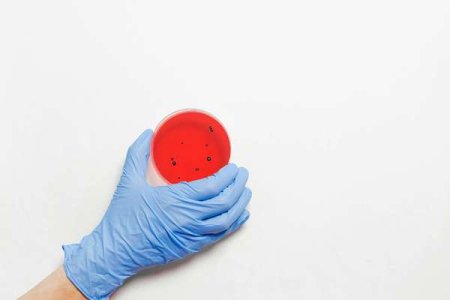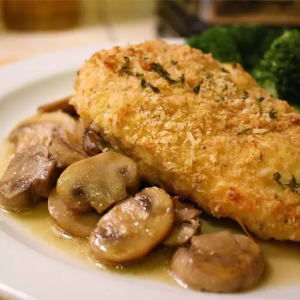Don’t Let Salmonella Ruin Your Meals! Must-Know Kitchen Hacks to Keep Your Family Safe
By
Veronica E.
- Replies 0
Staying healthy while savoring the foods you love is a priority for everyone, but recent headlines about increasing Salmonella outbreaks have raised concerns.
Suddenly, preparing a simple meal can feel like navigating a minefield. Should you be worried about the chicken in your fridge or that fresh salad on your plate?
Don’t let these fears dampen your culinary joy. Salmonella may be a formidable foe, but with a little knowledge and the right precautions, you can turn your kitchen into a fortress of food safety.
Understanding where this sneaky bacterium hides and how it spreads is your first step toward confidence at mealtime.

What Exactly Is Salmonella?
Salmonella is a sneaky bacterium that causes salmonellosis, a common foodborne illness. According to the Centers for Disease Control and Prevention (CDC), about 1.35 million Americans are infected annually.
It often enters our food chain through undercooked meats, unwashed produce, contaminated water, or even contact with animals and their waste. But the good news is that with the right precautions, you can protect yourself and your family.
Recognize the Symptoms: When to Take Action
While Salmonella can affect anyone, older adults and those with weakened immune systems need to be especially cautious. Symptoms usually appear within six hours to six days of exposure and may include:
Your Four-Step Shield Against Salmonella
Preventing salmonellosis starts with the CDC’s simple yet effective four-step strategy: clean, separate, cook, and chill.
1. Cleanliness Is Key
Wash your hands thoroughly before and after handling food, especially raw meats, eggs, and produce.
Don’t forget to clean cutting boards, utensils, and countertops with hot, soapy water to prevent bacteria from spreading.

2. Separate for Safety
Avoid cross-contamination by keeping raw meats separate from other foods.
Use designated cutting boards for meat and veggies, and wash them well after use.
3. Cook to the Right Temperature
Cooking food thoroughly is crucial. Use a meat thermometer to ensure your dishes reach safe internal temperatures:
5. Chill Perishables Promptly
Refrigerate meats, dairy, and produce promptly to slow bacterial growth.
While cold temperatures inhibit bacteria, they don’t eliminate them—so stay vigilant about cleaning your fridge and freezer.
By maintaining a clean kitchen, cooking food thoroughly, and following proper storage practices, you can significantly reduce your risk of salmonellosis. And remember, if you notice symptoms of foodborne illness, seek medical help immediately.
Your health is too important to leave to chance—so let’s banish those Salmonella fears and enjoy the golden years with confidence and care!

Have you ever faced a foodborne illness scare? Do you have any go-to kitchen hygiene tips or questions about staying safe from foodborne pathogens? We’d love to hear from you! Share your experiences, tips, or questions in the comments below and join the conversation.
Suddenly, preparing a simple meal can feel like navigating a minefield. Should you be worried about the chicken in your fridge or that fresh salad on your plate?
Don’t let these fears dampen your culinary joy. Salmonella may be a formidable foe, but with a little knowledge and the right precautions, you can turn your kitchen into a fortress of food safety.
Understanding where this sneaky bacterium hides and how it spreads is your first step toward confidence at mealtime.

Salmonella: Tiny microbes with the power to significantly impact your health. Image Source: Pexels / Anna Shvets.
What Exactly Is Salmonella?
Salmonella is a sneaky bacterium that causes salmonellosis, a common foodborne illness. According to the Centers for Disease Control and Prevention (CDC), about 1.35 million Americans are infected annually.
It often enters our food chain through undercooked meats, unwashed produce, contaminated water, or even contact with animals and their waste. But the good news is that with the right precautions, you can protect yourself and your family.
Recognize the Symptoms: When to Take Action
While Salmonella can affect anyone, older adults and those with weakened immune systems need to be especially cautious. Symptoms usually appear within six hours to six days of exposure and may include:
- Diarrhea (sometimes bloody)
- Stomach cramps
- Headache
- Nausea and vomiting
- Loss of appetite
Your Four-Step Shield Against Salmonella
Preventing salmonellosis starts with the CDC’s simple yet effective four-step strategy: clean, separate, cook, and chill.
1. Cleanliness Is Key
Wash your hands thoroughly before and after handling food, especially raw meats, eggs, and produce.
Don’t forget to clean cutting boards, utensils, and countertops with hot, soapy water to prevent bacteria from spreading.

Proper handwashing is your first line of defense against Salmonella and other foodborne illnesses. Image Source: Pexels / Ketut Subiyanto.
2. Separate for Safety
Avoid cross-contamination by keeping raw meats separate from other foods.
Use designated cutting boards for meat and veggies, and wash them well after use.
3. Cook to the Right Temperature
Cooking food thoroughly is crucial. Use a meat thermometer to ensure your dishes reach safe internal temperatures:
- 145°F for whole cuts of beef, veal, pork, lamb, and fish
- 160–165°F for ground meats, poultry, casseroles, and leftovers
5. Chill Perishables Promptly
Refrigerate meats, dairy, and produce promptly to slow bacterial growth.
While cold temperatures inhibit bacteria, they don’t eliminate them—so stay vigilant about cleaning your fridge and freezer.
By maintaining a clean kitchen, cooking food thoroughly, and following proper storage practices, you can significantly reduce your risk of salmonellosis. And remember, if you notice symptoms of foodborne illness, seek medical help immediately.
Your health is too important to leave to chance—so let’s banish those Salmonella fears and enjoy the golden years with confidence and care!
Key Takeaways
- Salmonella is a bacterium that causes a foodborne illness known as salmonellosis, which affects approximately 1.35 million people in the US annually.
- Symptoms of salmonellosis include watery diarrhea, stomach cramps, headache, nausea, vomiting, and loss of appetite. Severe cases can lead to hospitalization or even death.
- To prevent the spread of Salmonella and other foodborne illnesses, it’s essential to follow the four steps to food safety: clean, separate, cook, and chill.
- While Salmonella is often found in contaminated food, taking precautions such as thoroughly cooking food, washing hands and surfaces, and refrigerating perishables can significantly reduce the risk of contracting salmonellosis.
Have you ever faced a foodborne illness scare? Do you have any go-to kitchen hygiene tips or questions about staying safe from foodborne pathogens? We’d love to hear from you! Share your experiences, tips, or questions in the comments below and join the conversation.






